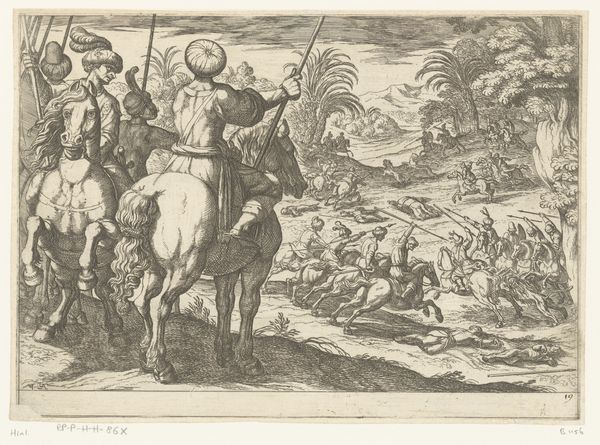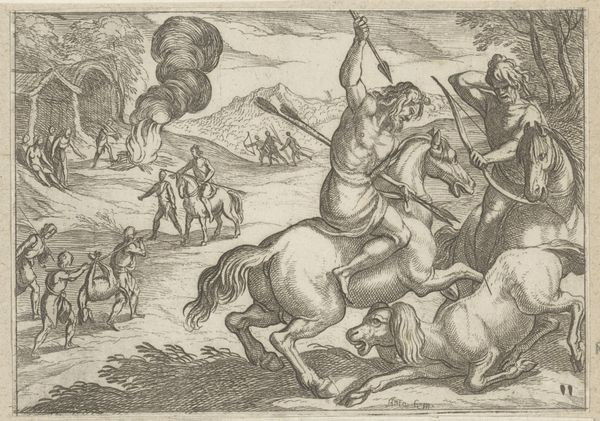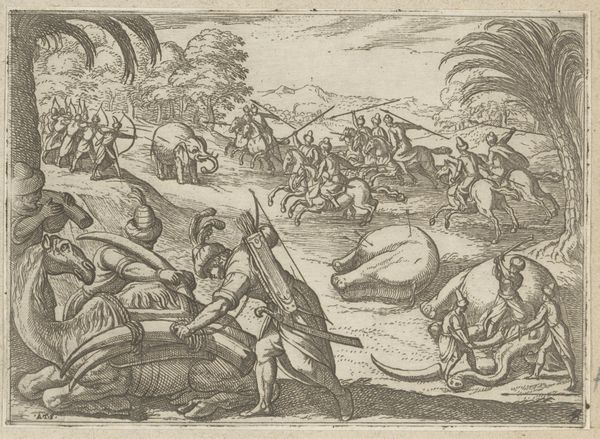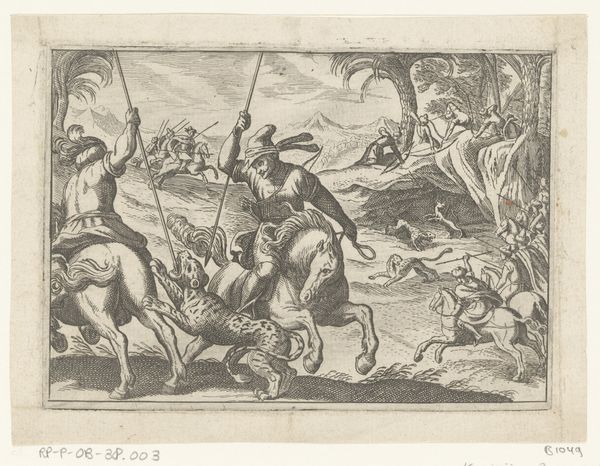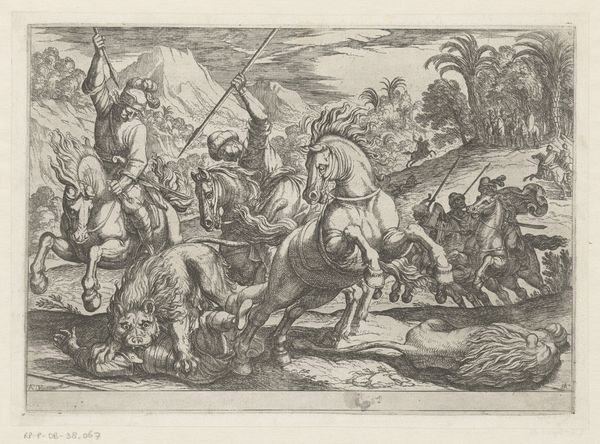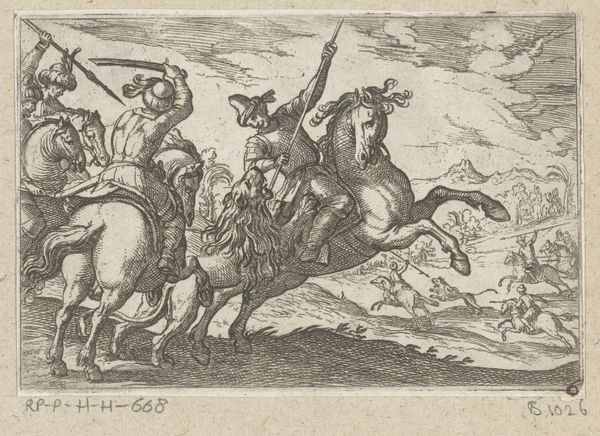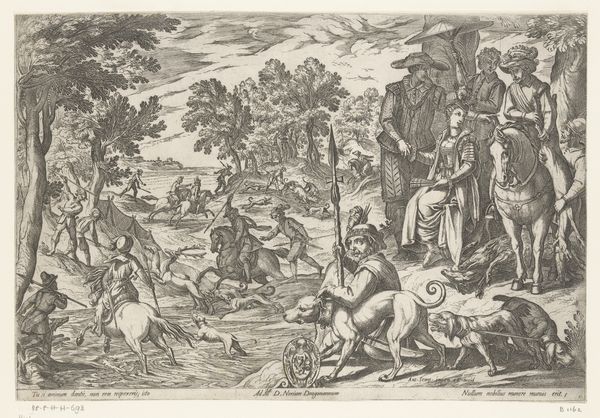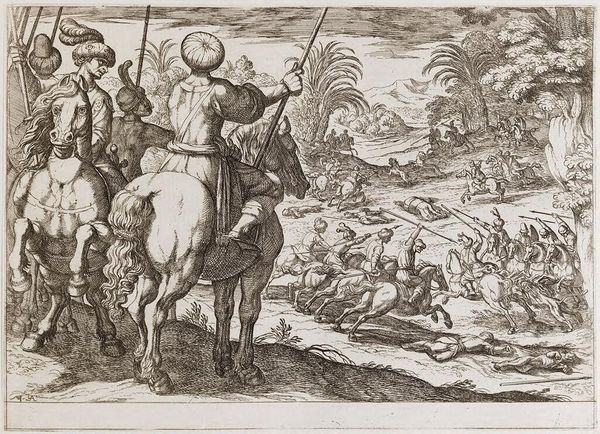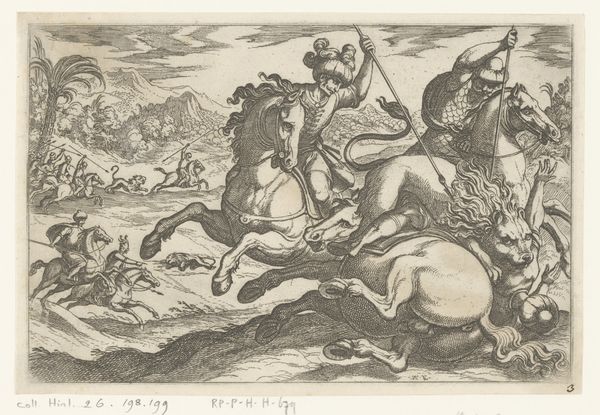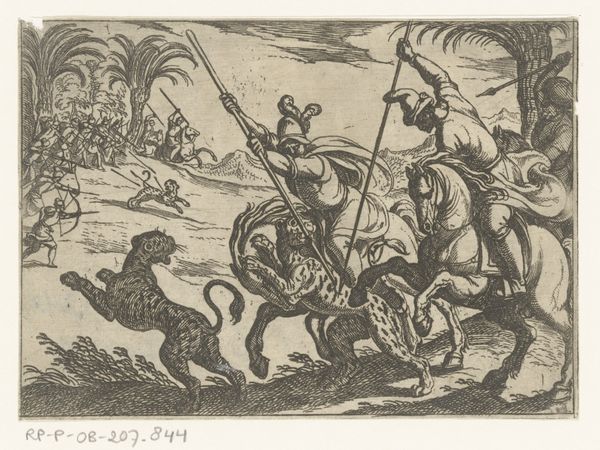
print, engraving
#
baroque
# print
#
landscape
#
genre-painting
#
history-painting
#
engraving
Dimensions: height 97 mm, width 137 mm
Copyright: Rijks Museum: Open Domain
Curator: This intricate print, "Twee mannen te paard doden een luipaard," which translates to "Two Men on Horseback Killing a Leopard," was created by Antonio Tempesta around 1598. What's your first impression, Editor? Editor: Chaos. It feels frantic, violent. The eye struggles to find a resting place amidst the flurry of spears, horses, and bodies. The landscape seems to swirl along with the hunt. Curator: Indeed, the composition is incredibly dynamic. Tempesta was known for his detailed hunting scenes. Consider how the print media, specifically engraving, lent itself to wide distribution and therefore solidified cultural attitudes towards nature. It reveals how Europeans viewed the landscape. Editor: Yes, I see that. It speaks to a very particular societal positioning of humans in relation to nature – one of dominion and conquest. Do you think this work reinforces power structures beyond just human versus animal? I mean, is there some kind of social commentary embedded? Curator: Certainly. When we look closely at the attire and weaponry, we can explore this scene as one depicting colonial or military encounters. The visual rhetoric used here would absolutely have resonated within narratives about dominance and the exertion of control over foreign populations. The history of imperialism is etched in its very lines. Editor: The piece also feels almost performative. Hunting often took place within rigidly constructed social codes. And who had the means to own the animals or participate in such pursuits? Curator: The figures themselves and the act portrayed suggest that hunting has long served not only the fulfillment of resources, but also the projection of wealth. In many ways, works of art from the past act as reflections of social ambition. Editor: Thinking about art within history gives me an important lens to reconsider contemporary issues concerning ecological destruction and our continuing quest for dominion over land and natural resources. I'm left considering its resonance in debates about social power. Curator: And for me, recognizing these histories helps dismantle the ways in which art either perpetuated those damaging perceptions or questioned them. I am constantly curious about how these narratives may inform possibilities of coexistence.
Comments
No comments
Be the first to comment and join the conversation on the ultimate creative platform.
